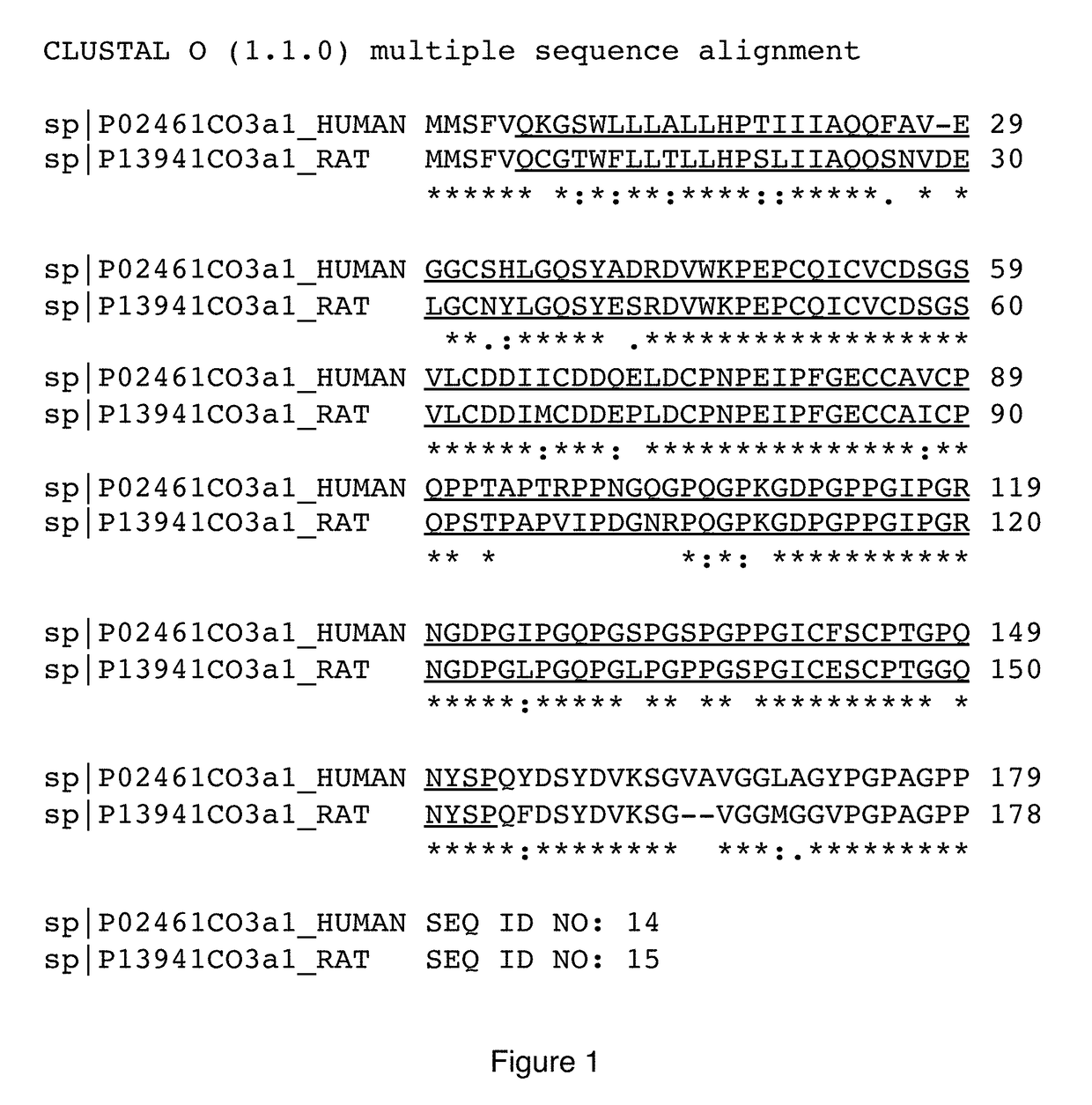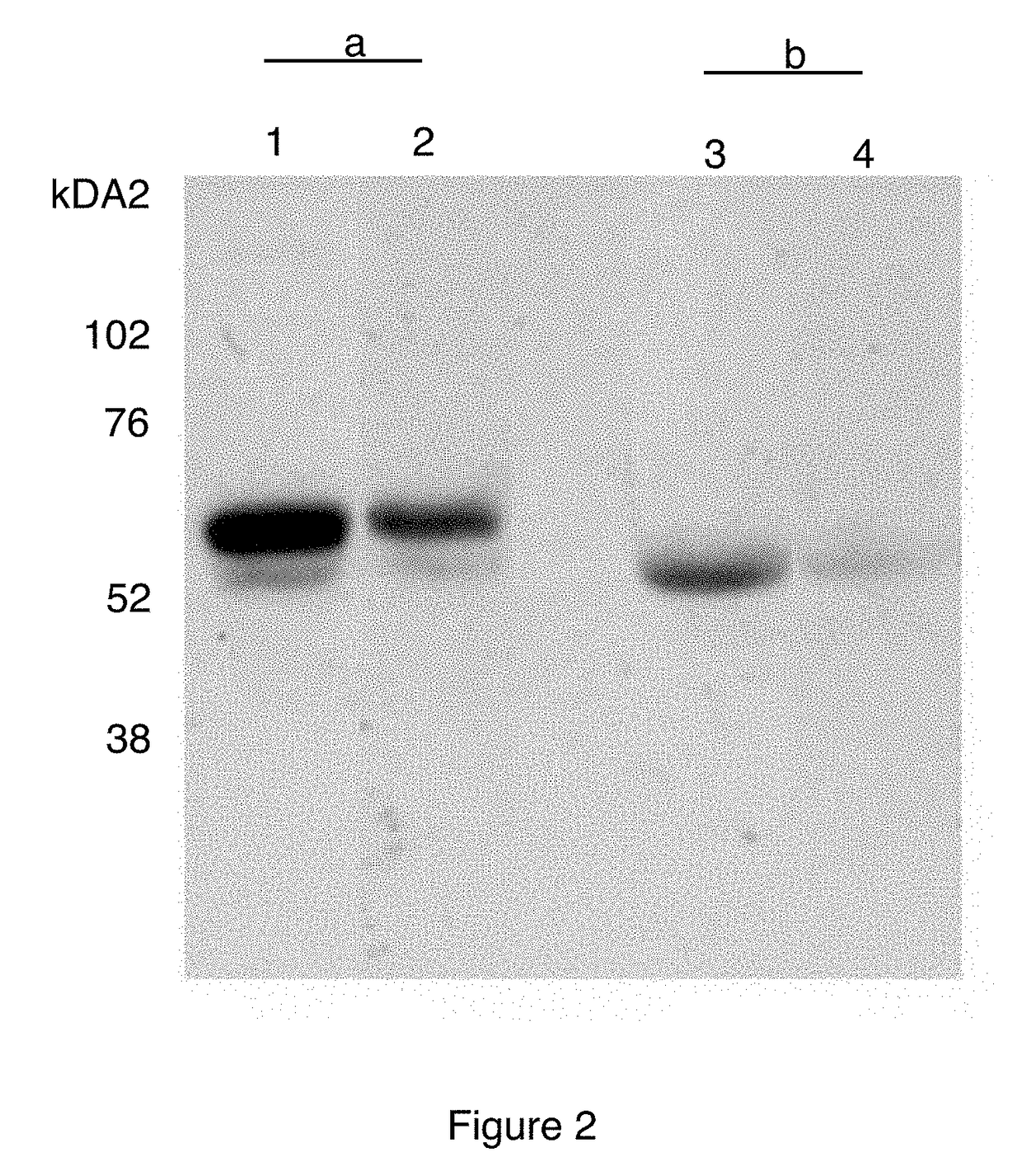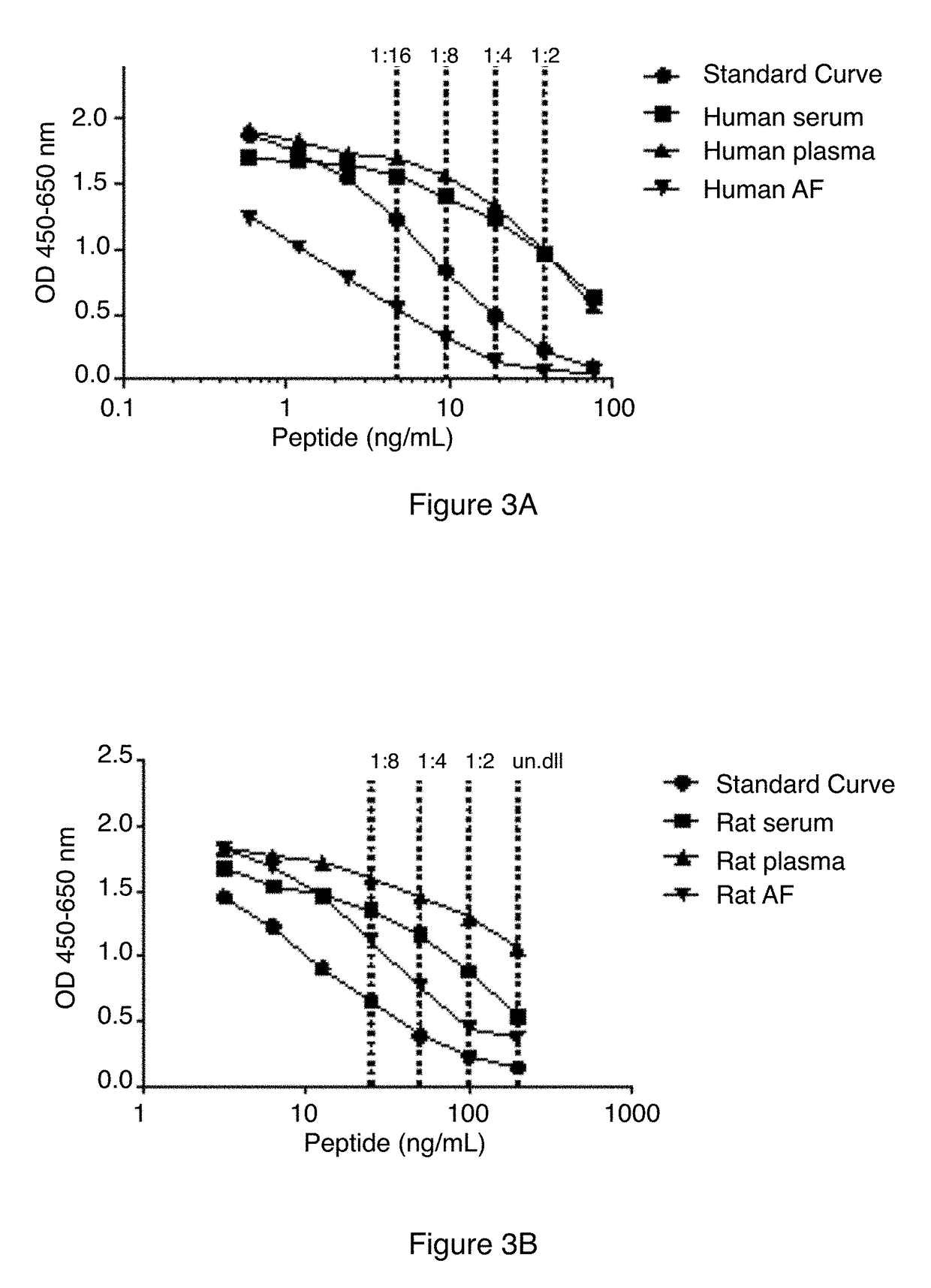PIIINP neo-epitope assay
a neoepitope and peptide technology, applied in the field of monoclonal antibodies, can solve the problems of abnormal molecule prone to rapid metabolic turnover, no approved treatment that directly targets the mechanism of fibrosis,
- Summary
- Abstract
- Description
- Claims
- Application Information
AI Technical Summary
Benefits of technology
Problems solved by technology
Method used
Image
Examples
example 1
l Antibody NB61-N62
Monoclonal Antibody Generation
[0057]The sequence for the N-terminal propeptide of type III collagen was aligned between human, rat and mouse species and selected from homology between the species and uniqueness among other ECM proteins by protein blasting. The amino acid sequence 145′-CPTGPQNYSP-′153 (SEQ ID NO: 6) in the α1 chain PIIINP is 100% homologues between human and rat (FIG. 1). Generation of monoclonal antibodies was initiated by subcutaneous immunization of 4-5 week old Balb / C mice with 200 μl emulsified antigen and 50 μg PIIINP neo-epitope C-terminal sequence (OVA-CGG-CPTGPQNYSP (SEQ ID NO: 10)) using Freund's incomplete adjuvant. The immunizations were repeated every 2 weeks until stable serum titer levels were reached. The mouse with the highest serum titer was selected for fusion. The mouse was rested for a month and then boosted intravenously with 50 μg PIIINP neo-epitope C-terminal sequence in 100 μl 0.9% NaCl solution three days before isolation ...
example 2
ISA Using NB61N-62
[0061]Supernatant from the antibody producing hybridoma was collected and the monoclonal antibody was purified using HiTrap affinity columns (GE Healthcare Life Science, Little Chalfont, Buckinghamshire, UK) and labeled with HRP using Lightning-Link™ HRP Conjugation Kit (Innova Biosciences, Babraham, Cambridge, UK), according to the manufacturer's instructions.
[0062]The PRO-C3 competitive ELISA procedure was as follows: A 96-well streptavidin-coated ELISA plate from Roche, cat.11940279, was coated with the biotinylated peptide Biotin-CGG-CPTGPQNYSP (SEQ ID NO: 11) dissolved in coater buffer (50 mM PBS-BTE+10% sorbitol, pH 7.4), incubated for 30 min at 20° C. in the dark and subsequently washed in washing buffer (20 mM Tris, 50 mM NaCl, pH 7.2). Thereafter 20 μl of peptide calibrator or sample were added to appropriate wells, followed by 100 μl of HRP-conjugated monoclonal antibody NB61N-62 dissolved in incubation buffer (50 mM PBS-BTB+10% LiquidII (Roche), pH 7.4) ...
example 3
ng the Ratio of Binding Affinity
[0074]To determine the ratio of the binding affinity of the monoclonal antibody for the target sequence to the binding affinity of the monoclonal antibody for the elongated or shortened sequence, each of the sequences are synthesized and used as calibrator peptides in the PRO-C3 ELISA as described in example 2. The resultant calibration curves are used to determine the IC50 values of each sequence / antibody combination. The ratio of IC50[target] / IC50[elongated or shortened] defines the ratio of binding affinity.
Example 4—Rat CCl4 Liver Fibrosis Model
[0075]Serum levels of PIIINP were assessed in a CCl4 inhalation rat model of liver fibrosis. Complete details of the study are described elsewhere [35]. The study included 52 male Wistar rats treated with CCl4 and 28 male Wistar vehicle rats (Charles-River, Saint Aubin les Elseuf, France). Induction of liver fibrosis was performed as previously described by others [36]. Briefly, CCl4 was administered by inh...
PUM
| Property | Measurement | Unit |
|---|---|---|
| molecular weight | aaaaa | aaaaa |
| temperature | aaaaa | aaaaa |
| pH | aaaaa | aaaaa |
Abstract
Description
Claims
Application Information
 Login to View More
Login to View More - R&D
- Intellectual Property
- Life Sciences
- Materials
- Tech Scout
- Unparalleled Data Quality
- Higher Quality Content
- 60% Fewer Hallucinations
Browse by: Latest US Patents, China's latest patents, Technical Efficacy Thesaurus, Application Domain, Technology Topic, Popular Technical Reports.
© 2025 PatSnap. All rights reserved.Legal|Privacy policy|Modern Slavery Act Transparency Statement|Sitemap|About US| Contact US: help@patsnap.com



